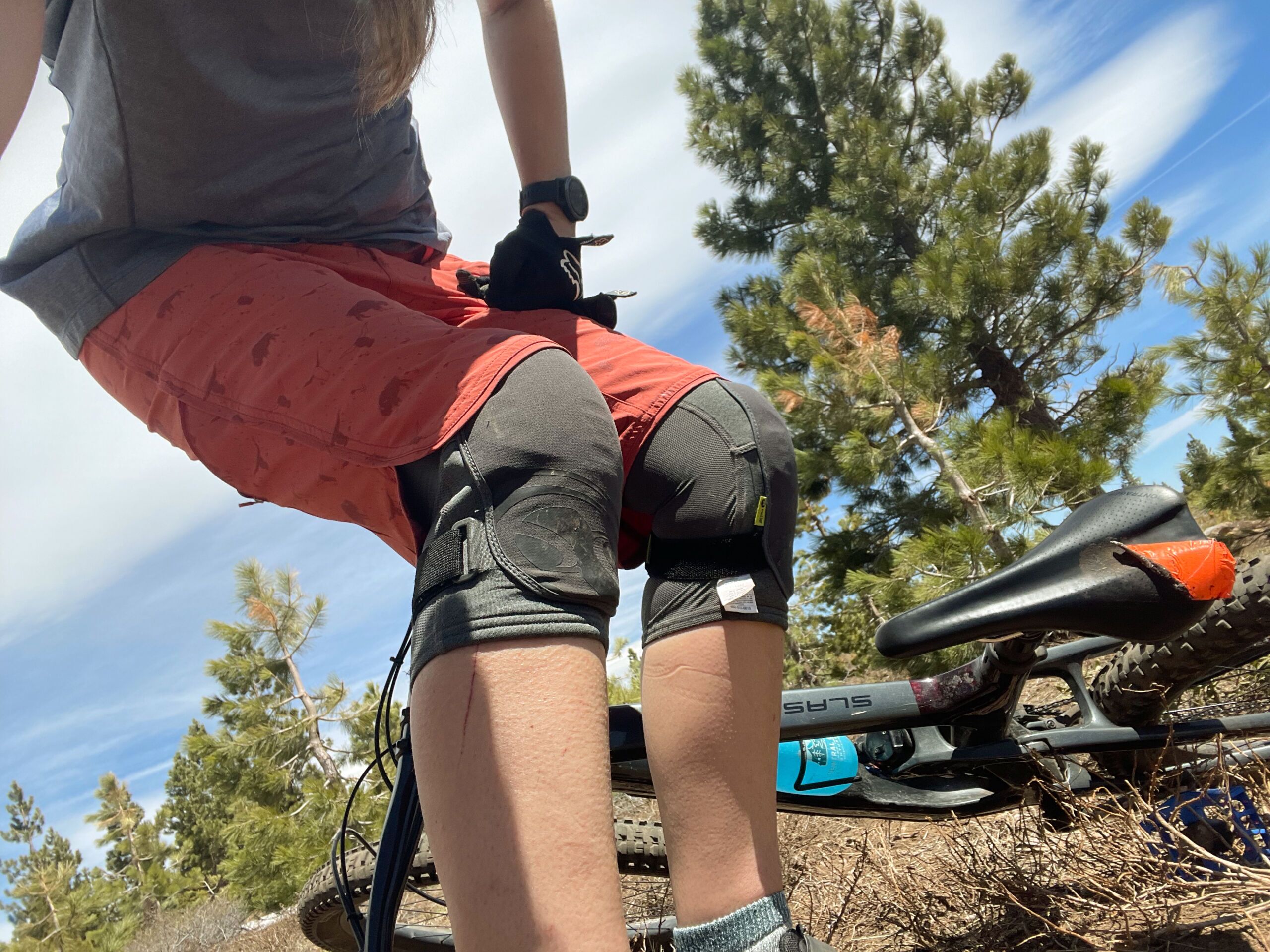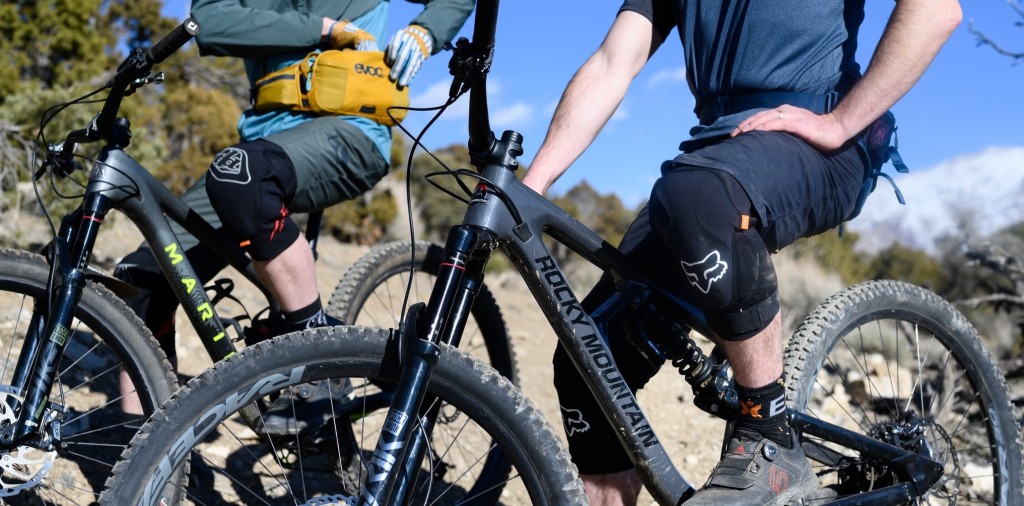Key Takeaways
A properly fitted helmet is crucial for head protection and should include MIPS technology for impact safety.
Choosing the right gloves can enhance grip and protect your hands; look for padding, fit, and seasonal suitability.
Padded shorts are not just for comfort, but they also offer protection for your lower body during falls.
Ensuring that all safety gear fits correctly is vital; this may require adjustments and seeking professional help.
Investing in high-quality gear pays off in the long run, and knowing when to replace it is part of staying safe.
Hitting the Trails with Confidence: A Guide to Senior MTB Safety Gear
Mountain biking is not just a sport for the young and reckless; it’s a fantastic way for seniors to stay active and enjoy nature. But with the thrills come potential spills, making safety gear non-negotiable. I’m here to walk you through the essentials—helmets, gloves, and padded shorts—so you can hit the trails with confidence and come back with stories, not scars.
Why Safety Gear Matters for Senior Riders
As we age, our bodies might not bounce back as quickly from falls or collisions. That’s why senior riders need to be extra cautious. Proper safety gear acts as a first line of defense against the common injuries associated with mountain biking. It’s not just about comfort; it’s about reducing the risk of serious harm. And let’s be clear, the right gear can be the difference between a minor tumble and a trip to the hospital.
Now, let’s get down to the nitty-gritty of each piece of gear and why it’s essential.
The Big Three: Helmets, Gloves, and Padded Shorts
Think of these three as the Holy Trinity of mountain biking safety for seniors. A helmet protects your head, gloves safeguard your hands, and padded shorts shield your lower body. Each piece has a role to play in keeping you safe on the trails.
Helmets: Your First Line of Defense
When it comes to mountain biking, your noggin is top priority. A helmet isn’t just a good idea; it’s your lifeline in many situations. And for seniors, the stakes are even higher because head injuries can be more severe and recovery can take longer.
Finding the Perfect Fit
Measure your head circumference just above your eyebrows to get your size.
Try on different helmets to find one that sits snugly on your head without being too tight.
Look for a helmet with an adjustable dial at the back for fine-tuning the fit.
Remember, a helmet that doesn’t fit right is almost as bad as no helmet at all. It should be snug enough that it doesn’t wobble, but not so tight that it’s uncomfortable. You should be able to shake your head without the helmet moving around. If you’re unsure about the fit, don’t hesitate to ask a professional at your local bike shop.

Features to Look For in Senior MTB Helmets
When selecting a helmet, there are a couple of features you should pay attention to, such as proper fit, ventilation, and safety standards. For more detailed information, check out our senior mountain biking guide which includes tips on the best Trek hardtail bikes and essential safety gear.
MIPS Technology: This stands for Multi-directional Impact Protection System. It’s designed to reduce rotational forces that can result from certain impacts.
Ample Ventilation: Good airflow keeps you cool and comfortable on long rides.
Extended Coverage: Helmets designed for mountain biking often offer more coverage around the back and sides of the head compared to standard road helmets.
It’s worth mentioning that while color and design might catch your eye, safety features are what really matter. So, prioritize helmets with safety certifications over those that just look cool.
For example, the Giro Montara MIPS helmet is a great choice for senior riders. It offers extended coverage, has a comfortable fit system, and comes with the all-important MIPS technology.
With your helmet sorted, let’s move on to protecting your hands.
Gloves: Grip & Protection at Your Fingertips
Next up, gloves. They’re not just for keeping your hands warm; they’re a critical piece of safety gear. A good pair of gloves can prevent blisters, improve grip, and protect your skin in case you take a spill.
Choosing Gloves for Comfort and Control
When picking gloves, you want to focus on three things: padding, fit, and the material. Padding helps absorb shock from bumpy rides, a snug fit ensures they won’t slip off or bunch up, and the material can keep your hands cool or warm depending on the weather.
And remember, gloves should allow you to easily maneuver the handlebars and brakes. If you can’t operate your bike effectively with your gloves on, they’re not the right pair for you.
Keep an eye out for Part 2 where we’ll dive into padded shorts, fitting your gear, and making smart investments in your mountain biking safety. Stay tuned, and stay safe!
Gloves for All Seasons: Insulated vs. Breathable Options
When it comes to gloves, the season matters. In the chill of winter, insulated gloves are a must to keep your fingers nimble. However, in the heat of summer, breathable gloves prevent sweaty palms, ensuring your grip stays firm. The key is to have options. For example, Fox Ranger Gloves strike a good balance with breathability for warmer weather, while a pair like the Pearl Izumi Elite Softshell Gloves can offer the insulation needed for colder rides.
Padded Shorts: Comfort and Protection Below the Belt
Padded shorts might not be the first thing that comes to mind when you think of safety gear, but they play a crucial role. They add a layer of cushioning between you and the saddle, and in the event of a fall, they provide some much-needed protection for your hips and tailbone.
Selecting the Right Amount of Padding
Consider the length of your rides. Longer rides usually benefit from more padding.
Think about your personal comfort levels. Some riders prefer a thicker pad, while others find less is more.
Try different shorts on to see what feels best. A bike shop can be a good place to start.
The right amount of padding is subjective and varies from rider to rider. It’s about finding the balance between comfort and mobility. Too much padding can be just as uncomfortable as too little, especially on longer rides.
Take the time to test different shorts. It’s worth investing in a pair that feels right for you. After all, discomfort in the saddle can quickly take the joy out of your ride.
As you shop, you’ll notice that padded shorts come in various styles, from those that look like traditional bike shorts to baggier options that resemble casual wear. It’s not just about looks—each style has its own set of features, so choose what aligns with your needs and preferences.

Material Matters: Breathability and Durability
When you’re out on the trail, the last thing you want is for your gear to fail. That’s why the material of your padded shorts is so important. Look for shorts made from strong, durable fabrics that can withstand the rigors of the trail. But durability doesn’t mean sacrificing comfort. The best materials also offer breathability to keep you cool and dry, which is crucial for long rides in warm weather.
Fitting Your Gear: Size Does Matter
It’s simple: if your gear doesn’t fit, it won’t protect you properly. Whether it’s a helmet, gloves, or padded shorts, the right size is key. Gear that’s too large can shift or come off in a fall, while gear that’s too tight can restrict movement and be uncomfortable, which can be distracting and dangerous on the trails.
Ensuring Proper Fit for Maximum Protection
When trying on gear, move around in it. Mimic the movements you’ll be making on your bike. This isn’t just about standing still and feeling good; it’s about ensuring the gear will stay in place and protect you as you ride. And don’t forget to wear the same layers you’d typically have on while riding; this will affect the fit of your gear.
For helmets, a good fit means the helmet sits level on your head, touching all around, and is snug but not tight. The straps should form a ‘V’ under your ears and be tight enough that you can only fit one or two fingers under the chin strap.
Adjustment Tips for Seniors
As we age, our body shape can change, and what once fit us perfectly may no longer do so. It’s essential to reassess the fit of your gear regularly. Look for gear with adjustable features, like straps or dials, which can help accommodate these changes. And if you’re not sure how to adjust your gear, ask for help at your local bike shop. They’re usually more than happy to assist.
Lastly, consider the ease of getting your gear on and off. As flexibility decreases, gear that’s easy to handle becomes more important. Look for gloves with Velcro straps and padded shorts with a comfortable waistband.
Check the fit of your helmet every time you wear it.
Ensure gloves have a snug fit without restricting movement.
Choose padded shorts that offer a comfortable but secure waistband.
Making the Investment: Quality over Quantity
When it comes to safety gear, the adage ‘you get what you pay for’ often holds true. High-quality gear may come with a higher price tag, but it’s an investment in your safety and comfort. Cheaper options might save you money upfront, but they often don’t provide the same level of protection or durability.
Long-Term Benefits of High-Quality Gear
Investing in quality gear means you’re less likely to need replacements after a few rides. It’s built to last, which means more time on the trails and less time (and money) spent shopping for new gear. Plus, better materials and construction usually translate to better protection and comfort, which can make a big difference in your overall riding experience.
Remember, the goal is to enjoy mountain biking safely for as long as possible. High-quality gear supports this by ensuring you’re well-protected every time you ride.
When to Replace Your MTB Safety Gear
Even the best gear has a lifespan. Helmets should generally be replaced every three to five years, or immediately after a significant impact, even if no damage is visible. Gloves and padded shorts will show wear more obviously, but if you notice any tears, fraying, or compromised padding, it’s time for a new pair.
Stay vigilant about the condition of your gear. Regular checks can catch potential problems before they become safety issues. And remember, the trails will always be there, so prioritize your safety first and foremost.
Stay tuned for Part 3, where we’ll discuss additional safety considerations and how to ensure you’re fully prepared for your mountain biking adventures. For more insights on safety gear, check out our guide on helmets, gloves, and fashionable riding wear for senior MTB. Keep riding, and keep safe!
Mountain biking can be an exhilarating way to enjoy the outdoors and stay fit, but it’s crucial to have the right gear, especially for senior riders. Your safety gear isn’t just about comfort; it’s about protection. It’s about ensuring that each ride is as safe as it is enjoyable. So, let’s talk about making the right investments in your mountain biking gear.
Making the Investment: Quality over Quantity
Quality should always trump quantity when it comes to safety gear. You don’t need a garage full of helmets, gloves, and shorts, but you do need gear that’s going to stand up to the rigors of the trail and provide the protection you need, when you need it. High-quality gear is designed with the best materials and construction methods to ensure your safety and comfort on every ride.
It’s not just about the initial purchase; it’s about value over time. Think of your safety gear as an investment in your health and wellbeing. Opting for well-made items can save you money in the long run, as they generally last longer and perform better than cheaper alternatives.

Long-Term Benefits of High-Quality Gear
Investing in high-quality mountain biking gear has several benefits. Firstly, you’re less likely to encounter malfunctions or breakages, which can be both inconvenient and dangerous. Secondly, superior materials and design typically offer better comfort and fit, enhancing your overall riding experience. Lastly, durable gear won’t need to be replaced as often, saving you money and time in the long run.
When to Replace Your MTB Safety Gear
Knowing when to replace your gear is just as important as buying the right gear in the first place. Here’s a quick guide:
Helmets: Replace every 3-5 years or immediately after a significant impact, even if no damage is visible.
Gloves: Look for signs of wear like tears or fraying, and replace when the padding or grip is compromised.
Padded Shorts: Replace when the padding becomes too compressed to provide adequate protection or if there are any rips in the material.
Regular inspections of your gear are essential. If you’re ever in doubt about the integrity of your safety equipment, it’s better to err on the side of caution and replace it.
FAQ
What is the Most Important Safety Gear for Senior Mountain Bikers?
While all safety gear is important, the helmet is absolutely critical. It’s the primary protection against head injuries, which can be life-altering. Always wear a helmet that meets safety standards and is properly fitted to your head.
How Do I Know When My Helmet Needs Replacing?
You should replace your helmet if you’ve had a crash where your head hit the ground, even if the helmet appears unscathed. Over time, the protective materials can degrade, so it’s also wise to replace your helmet every few years, even without a crash.
Can Gloves Really Prevent Injuries?
Yes, gloves can prevent a range of injuries. They cushion your hands during falls, protect against cuts and scrapes, and can reduce the risk of blisters and vibration-related nerve damage. Gloves also improve your grip on the handlebars, which can prevent accidents.
Are Padded Shorts Necessary for Short Rides?
Padded shorts aren’t just about comfort on long rides; they also provide an extra layer of protection during falls. While they’re more critical for longer rides, they can still be beneficial for short trips, especially if you’re riding on rough terrain.
How Can Seniors Ensure Their Safety Gear Fits Properly?
Seniors should try on gear before purchasing to ensure a proper fit. Adjust straps and pads as needed, and don’t hesitate to ask for help from store staff or fellow riders. Remember, gear that doesn’t fit correctly won’t provide the protection you need. For more detailed guidance, check out our mountain bikepacking essentials for gear and setup tips.
Mountain biking is a thrilling sport that can be enjoyed safely at any age, provided you have the right gear and know how to use it. By choosing quality helmets, gloves, and padded shorts, and ensuring they fit properly, you can hit the trails with confidence, knowing you’re well-protected. Ride safe and have fun!


